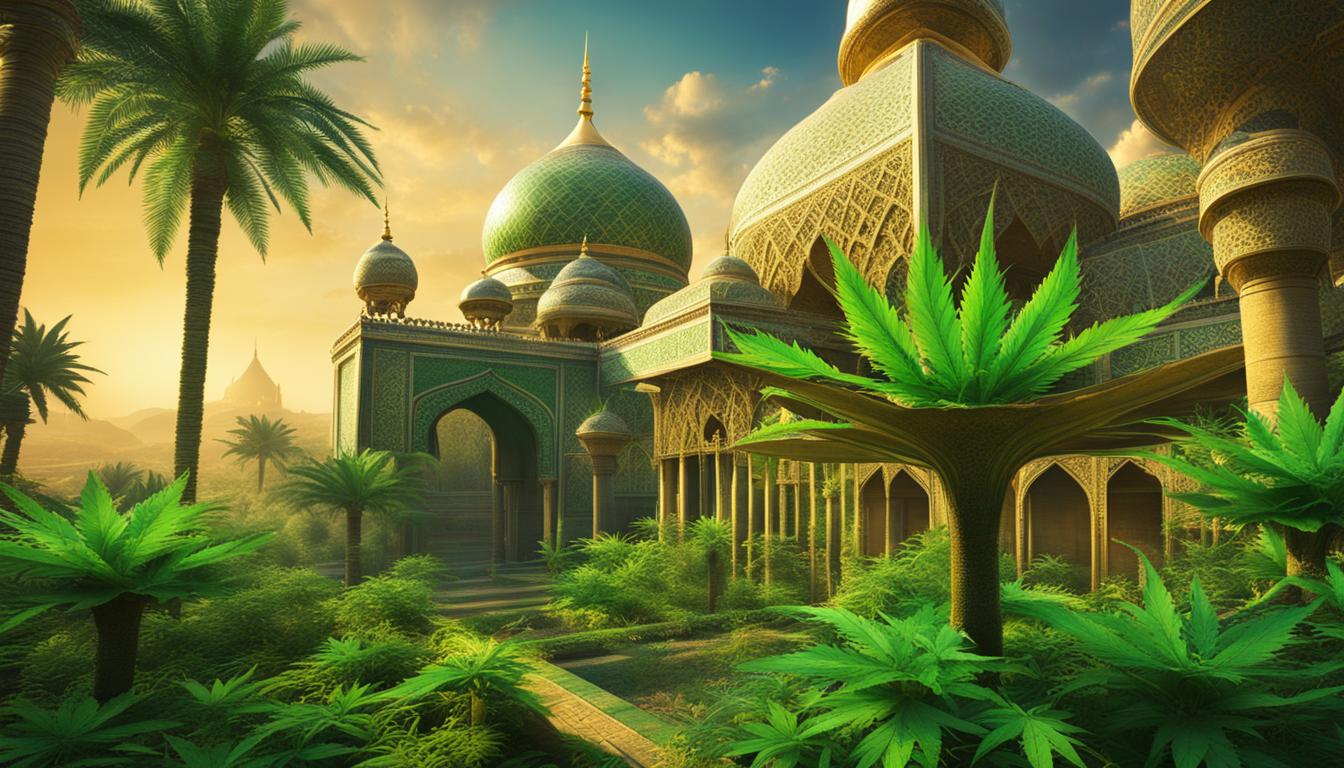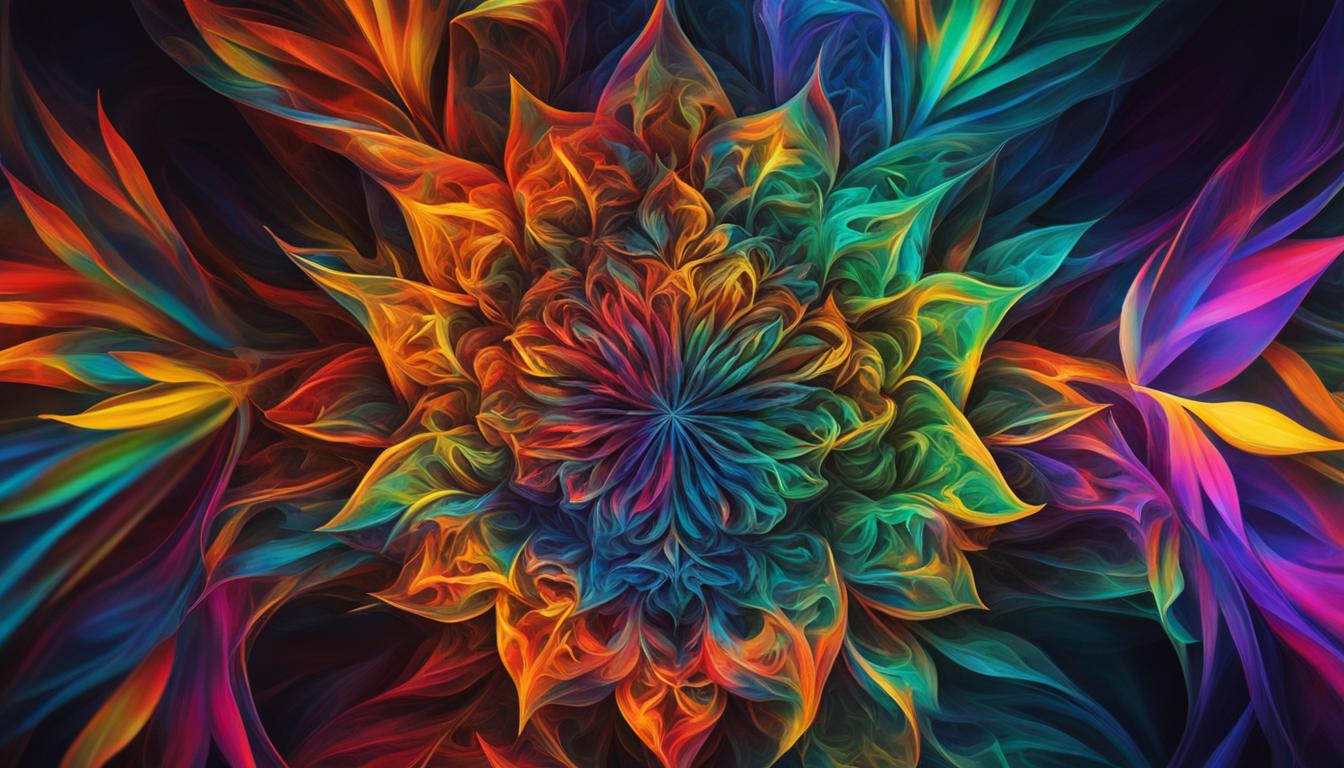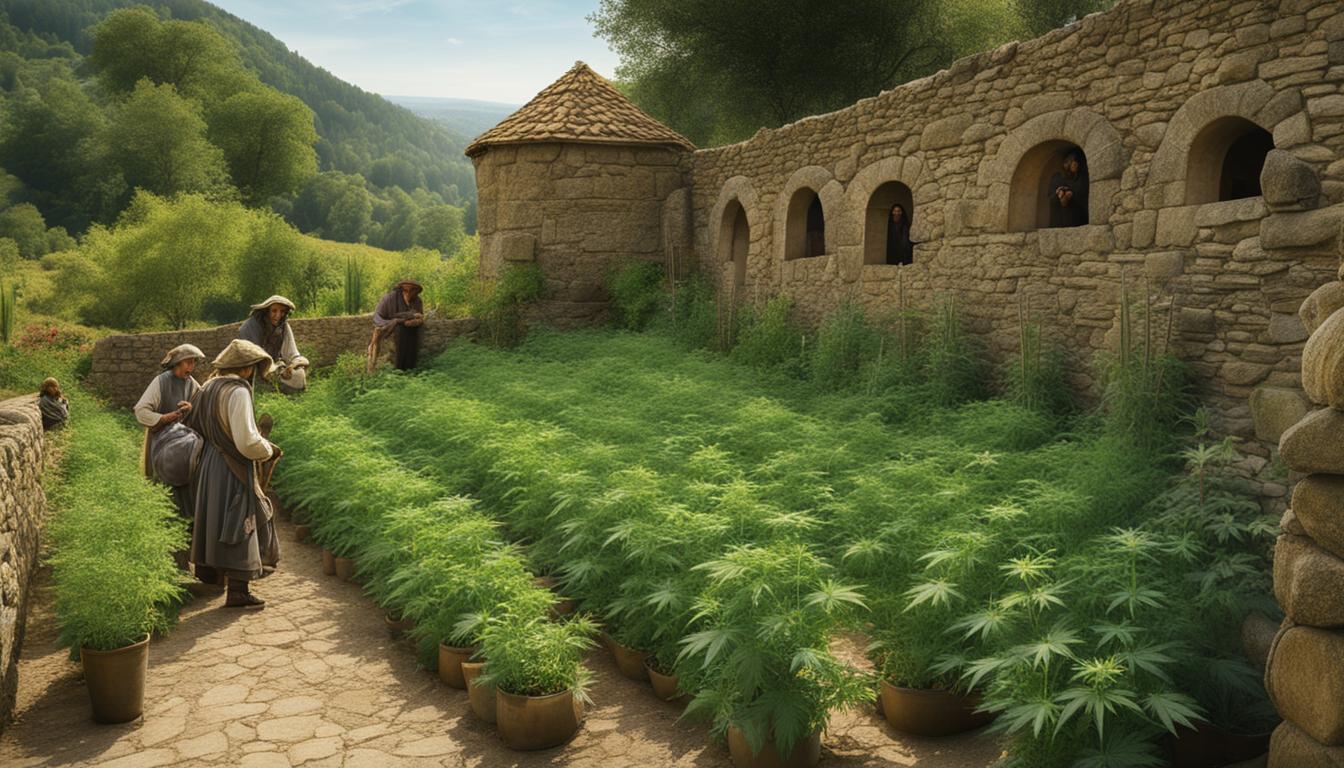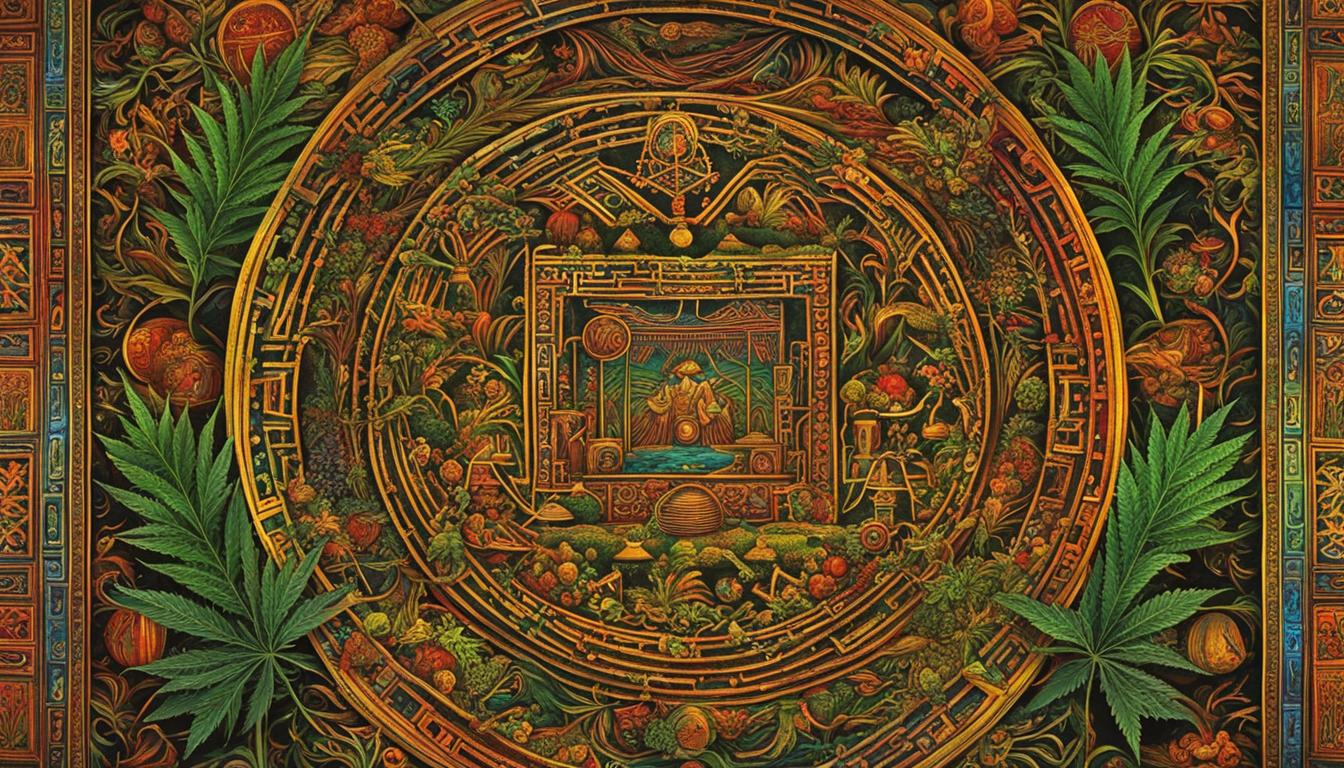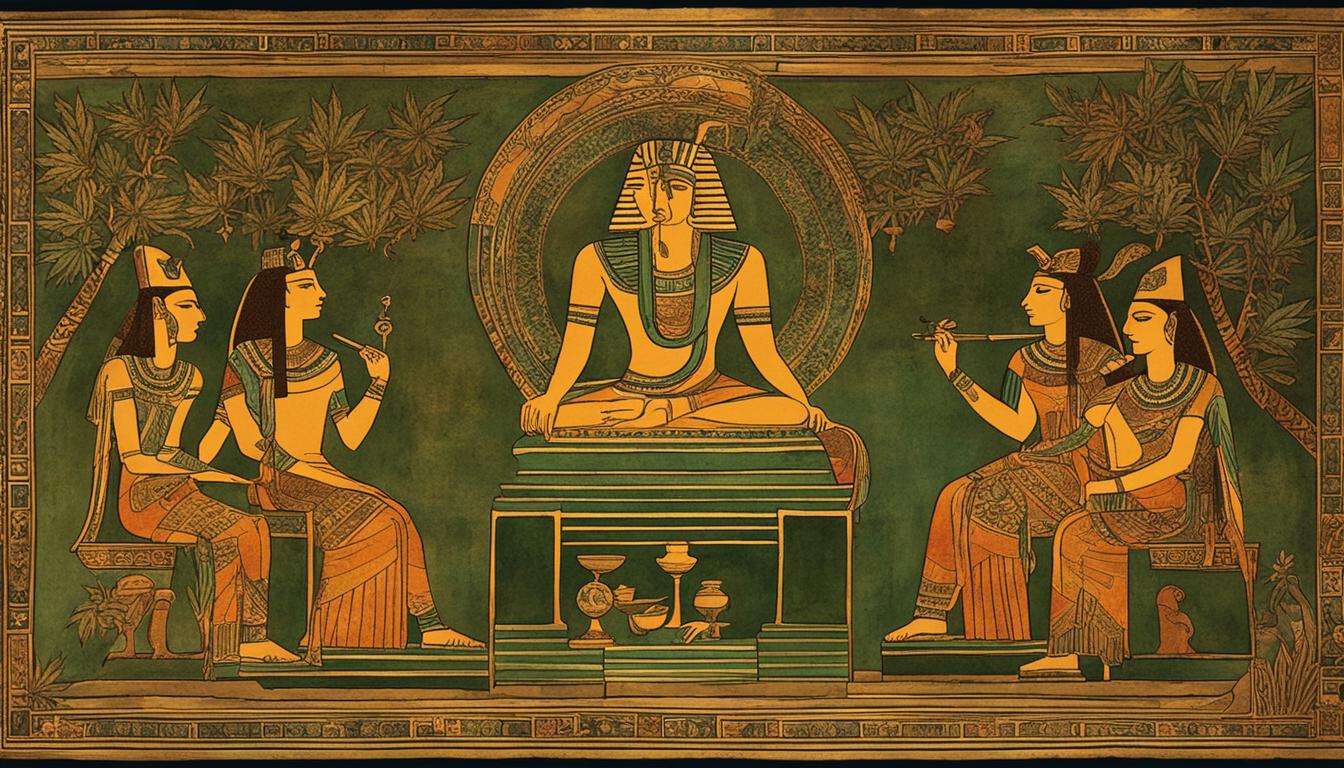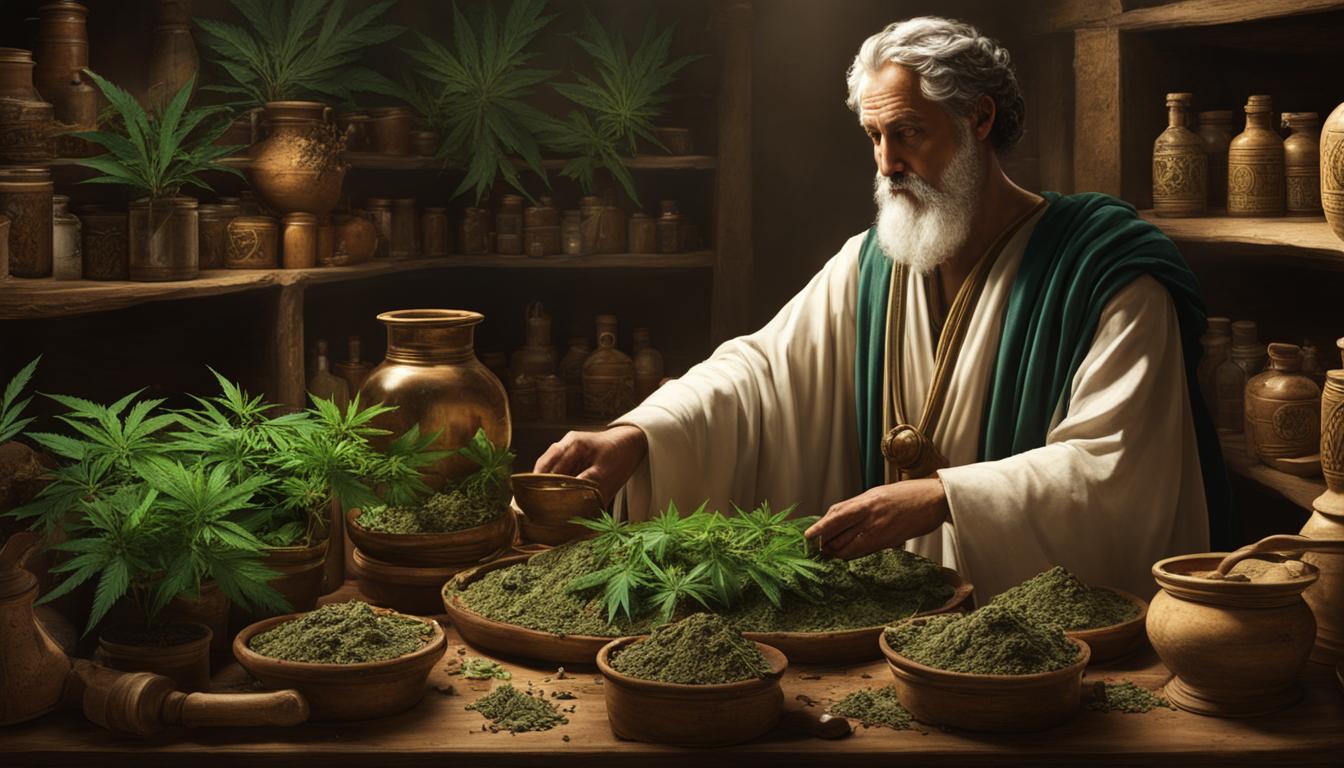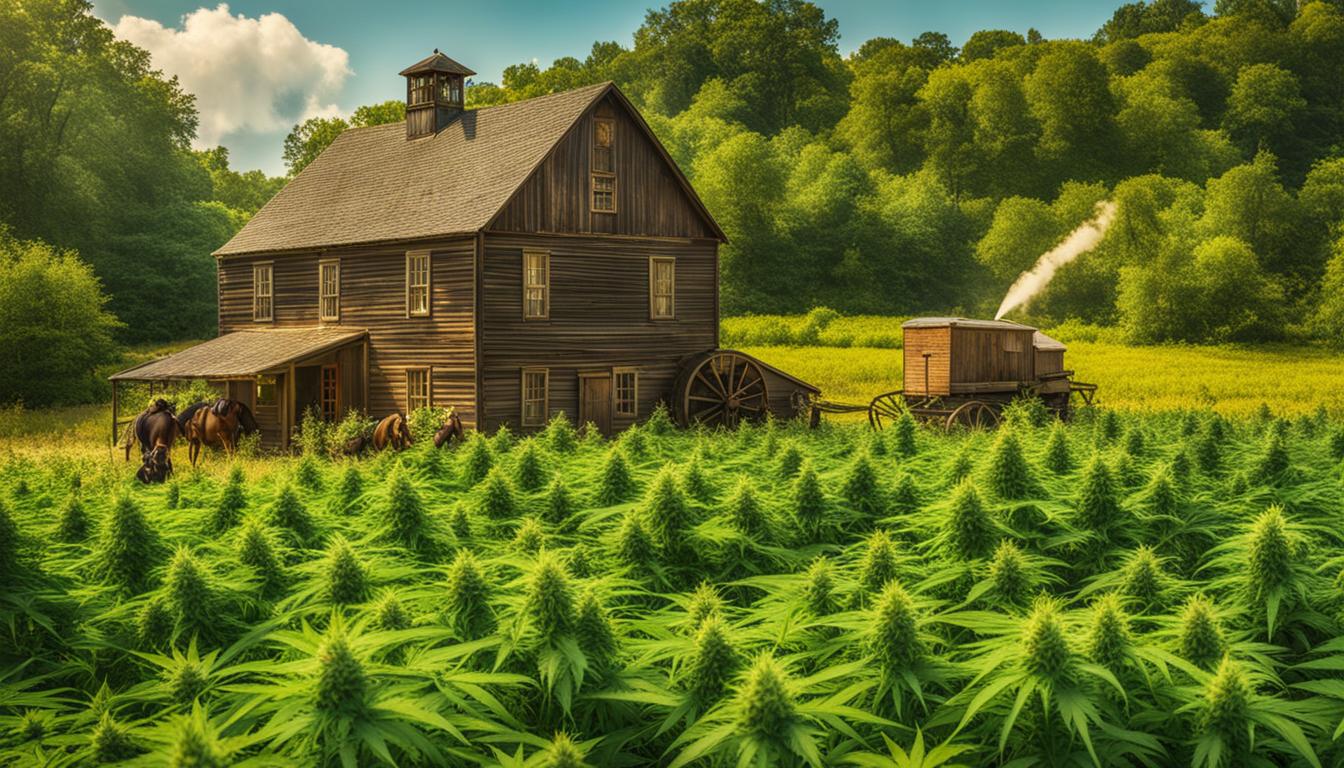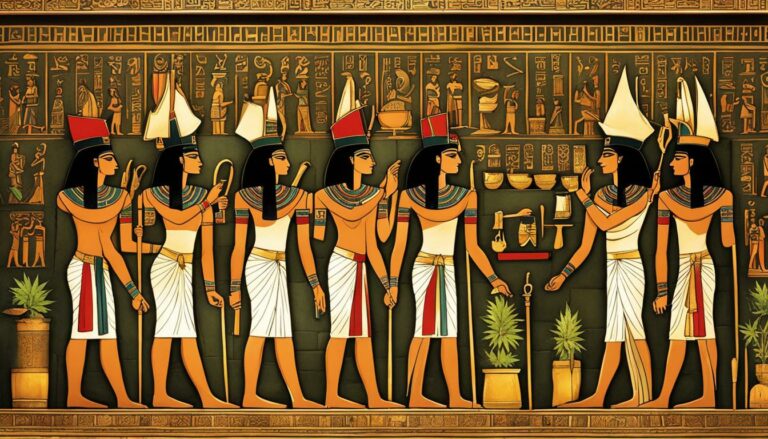What Role Did Cannabis Play in the Islamic Golden Age?
Cannabis, a plant with a rich history, played a significant role in the Islamic Golden Age. Its use and influence during this time period were far-reaching and varied, contributing to advancements in medicine, philosophy, literature, and art.
The Islamic Golden Age, spanning from the 8th to the 14th centuries, was a period of remarkable intellectual and cultural growth in the Islamic world. It was during this time that cannabis emerged as a valued resource, utilized for medicinal, recreational, religious, and intellectual purposes.
Medicinally, cannabis was regarded for its therapeutic properties with Islamic physicians exploring its potential in treating various ailments. Cannabis also played a pivotal role in shaping Islamic art and literature, with its intoxicating effects believed to enhance creativity and spiritual experiences.
Furthermore, cannabis held religious and spiritual significance, being utilized in rituals and ceremonies to induce altered states of consciousness and connect with the divine. Its symbolism can be found in Islamic religious texts and traditions, emphasizing its sacred role in Islamic culture.
The trade and cultural exchange of cannabis in the Islamic Golden Age facilitated the spread of knowledge, ideas, and cultural practices among different Islamic regions. This trade fostered cultural richness and diversity within Islamic civilization.
Understanding the multifaceted role of cannabis in the Islamic Golden Age provides valuable insights into the rich history and contributions of Islamic civilization. Join us as we delve deeper into the historical use, contributions, and significance of cannabis during this extraordinary period.
Historical Use of Cannabis in the Islamic Golden Age
Cannabis has a rich historical legacy in ancient Islamic civilization, particularly during the Islamic Golden Age. This period, spanning from the 8th to the 14th centuries, witnessed significant advancements in various fields, including science, art, and philosophy. During this time, cannabis was widely used and embraced for its medicinal properties, recreational purposes, and as a tool for spiritual and intellectual exploration.
In ancient Islamic societies, such as the Arab and Persian cultures, cannabis held great importance. It was recognized for its therapeutic benefits, being utilized to alleviate pain, reduce inflammation, and treat various ailments. Physicians and scholars of the time extensively studied and documented the medicinal properties of cannabis, paving the way for advancements in herbal medicine.
“Cannabis was highly valued for its therapeutic properties in ancient Islamic civilization. It was believed to possess the power to heal and restore balance to the body.”
Beyond its medical applications, cannabis also had a profound impact on religious and spiritual practices during the Islamic Golden Age. It was used in rituals and ceremonies as a means to induce altered states of consciousness and enhance spiritual experiences. Cannabis played a significant role in mystical traditions, such as Sufism, where it was believed to facilitate a deeper connection with the divine and facilitate spiritual enlightenment.
The historical use of cannabis in the Islamic Golden Age showcases its integral role in shaping the culture and knowledge of the time. Its influence extended beyond medicine and spirituality, permeating various aspects of society and contributing to the overall intellectual and artistic achievements of Islamic civilization.
Table: Cannabis Use in Ancient Islamic Civilization
| Application | Significance |
|---|---|
| Medicine | Used for treating various ailments and explored for its therapeutic properties |
| Spirituality | Used in religious rituals and ceremonies to induce altered states of consciousness |
| Intellectual Pursuits | Utilized as a tool for philosophical and mystical exploration |
| Artistic Inspiration | Believed to enhance creativity and served as a muse for artists and poets |
| Cultural Exchange | Traded among different Islamic regions, contributing to the spread of knowledge and ideas |
Cannabis Contributions to Islamic Civilization
Cannabis had a profound impact on Islamic civilization during the Golden Age. Its versatile properties and cultural significance influenced various aspects of society, contributing to intellectual development, medical advancements, and artistic expressions.
One of the most notable contributions of cannabis was to Islamic intellectual pursuits. The plant’s psychoactive effects were believed to enhance introspection and facilitate deep thinking, making it a valuable tool for philosophers and scholars. Cannabis allowed Islamic thinkers to explore new ideas, challenge conventional beliefs, and push the boundaries of knowledge.
“Cannabis opened the doors of perception, allowing us to glimpse the hidden realms of knowledge and spiritual enlightenment.” – Ibn Sina
Cannabis also played a crucial role in Islamic medicine. The plant’s therapeutic properties were harnessed by Islamic physicians to treat various ailments, ranging from pain and inflammation to gastrointestinal disorders. Through empirical observation and experimentation, Islamic doctors developed remedies and treatments that laid the foundation for herbal medicine.
Furthermore, cannabis influenced Islamic art and literature during the Golden Age. It served as a source of inspiration for artists and poets, with its intoxicating effects believed to enhance creativity and spiritual experiences. Cannabis symbolism can be found in Islamic artworks and literary works, reflecting its cultural significance and the role it played in shaping artistic expressions.
| Contributions of Cannabis to Islamic Civilization | Impact |
|---|---|
| Intellectual Development | Facilitated deep thinking and exploration of new ideas |
| Medical Advancements | Used in the treatment of various ailments and laid the foundation for herbal medicine |
| Artistic Expressions | Source of inspiration for artists and poets, enhancing creativity and spiritual experiences |
The contributions of cannabis to Islamic civilization during the Golden Age cannot be overlooked. The plant’s impact on intellectual pursuits, medical advancements, and artistic expressions shaped the rich history and cultural heritage of Islamic societies. Understanding the role of cannabis in this era provides valuable insights into the progress and contributions of Islamic civilization.
Cannabis and Islamic Art and Literature
Cannabis played a significant role in shaping Islamic art and literature during the Golden Age. Its influence can be seen in the intricate designs and symbolism found in various Islamic artworks, as well as in the themes and imagery depicted in Islamic literature.
Artists in the Islamic world drew inspiration from the intoxicating effects of cannabis, believing that it enhanced their creativity and allowed them to connect with higher states of consciousness. The use of cannabis as a source of inspiration can be observed in the intricate patterns and vibrant colors found in Islamic art, as well as in the representation of mystical and spiritual themes.
“Cannabis served as a catalyst for creativity and spiritual exploration, allowing artists to express their innermost thoughts and emotions in their creations.”
In Islamic literature, cannabis was often associated with transcendence and spiritual enlightenment. Poets and writers incorporated cannabis symbolism into their works, using it as a metaphor for the pursuit of higher knowledge and divine connection. The use of cannabis imagery added depth and richness to the works, inviting readers to contemplate the deeper meanings embedded within the texts.
The Symbolism of Cannabis in Islamic Art
Cannabis symbolism in Islamic art often represented states of altered consciousness, spiritual awakening, and divine connection. The use of cannabis motifs in patterns and designs can be seen in various architectural elements, such as the intricate and geometric patterns adorning mosques and palaces.
| Symbolism | Description |
|---|---|
| Sufism | In Sufism, the mystical branch of Islam, cannabis was associated with spiritual awakening and the pursuit of divine love. Sufi poets used cannabis imagery to convey the ecstatic states experienced during their mystical practices. |
| Connection to Nature | Cannabis symbolism in Islamic art was often used to represent the connection between humans and the natural world. It symbolized the harmony and interdependence between humanity and the environment. |
| Meditative States | Cannabis motifs in Islamic art were sometimes used to depict individuals in deep contemplation or meditative states. The use of cannabis imagery represented the transcendence of the physical realm and the journey into the realm of the spirit. |
The use of cannabis in Islamic art and literature during the Golden Age was not only a reflection of cultural practices but also a testament to the influence of the plant on creative expression and spiritual exploration. Cannabis served as a catalyst for creativity and spiritual insight, leaving a lasting impact on the artistic and literary traditions of Islamic civilization.
Cannabis’s Role in Islamic Medicine
During the Islamic Golden Age, cannabis played a significant role in the field of medicine. Islamic physicians recognized its therapeutic properties and incorporated it into their healthcare practices. The use of cannabis in Islamic medicine contributed to the development of remedies and treatments for various ailments.

Islamic scholars explored the medicinal benefits of cannabis and documented their findings, which had a lasting impact on the field of medicine. Cannabis was utilized to alleviate pain, reduce inflammation, and treat gastrointestinal disorders. Its effectiveness as a natural remedy made it a valuable resource in Islamic healthcare.
To better understand the contributions of cannabis in Islamic medicine during the Golden Age, we can refer to the following table:
| Application | Benefits |
|---|---|
| Pain Relief | Alleviates chronic and acute pain |
| Inflammation | Reduces inflammation and swelling |
| Gastrointestinal Disorders | Relieves symptoms such as nausea, vomiting, and diarrhea |
This table demonstrates the various applications and benefits of cannabis in Islamic medicine, showcasing its versatility in treating different health conditions. Islamic physicians embraced the use of cannabis as a holistic approach to healing.
References
- Al-Khayyat, S. M., & Abourashed, E. A. (2018). Medicinal plants of the Islamic world: an introduction. Journal of ethnopharmacology, 224, 103–111. https://doi.org/10.1016/j.jep.2018.04.018
- Lev, E. (2007). Drugs held and sold by pharmacists of the Jewish community of medieval (11–14th centuries) Cairo according to lists of materia medica found at the Taylor-Schechter Genizah collection, Cambridge. Journal of ethnopharmacology, 110(2), 275–293. https://doi.org/10.1016/j.jep.2006.09.002
Cannabis’s Role in Islamic Golden Age Religious and Spiritual Practices
Cannabis held a prominent place in the religious and spiritual practices of Islamic society during the Golden Age. Its use was deeply rooted in the quest for enlightenment and the pursuit of a deeper connection with the divine. The cannabis plant, known as “hashish” in Arabic, played a significant role in mystical practices, particularly within Sufism, a mystical branch of Islam.
Within Sufism, cannabis was believed to facilitate spiritual experiences and aid in the journey towards self-realization. Used in moderation and under strict spiritual guidance, cannabis was seen as a tool for achieving transcendental states of consciousness and attaining a heightened sense of enlightenment. The Sufi mystics believed that cannabis had the ability to unlock the doors of perception, allowing them to reach a deeper understanding of spiritual truths and connect with the divine essence within themselves.
The spiritual significance of cannabis in Islamic society during the Golden Age is also evident in the use of the plant in rituals and ceremonies. Cannabis was often burned as incense or smoked in religious gatherings to induce altered states of consciousness and facilitate spiritual experiences. The intoxicating effects of cannabis were seen as a means to transcend the limitations of the physical world and enter into a higher realm of existence, fostering a deeper connection with the divine presence.
The Symbolic Importance of Cannabis in Islam
Beyond its practical applications, cannabis held symbolic importance in Islamic culture. It is mentioned in various Islamic religious texts and poetry, often associated with notions of ecstasy, divine love, and spiritual awakening. The symbolism of cannabis in Islamic art and literature further highlights its cultural and spiritual significance during the Golden Age.
“The inhalation of smoke made its effects known to Sufis over the centuries and, indeed, like all mystical communities, Sufis have long been aware of the psychoactive properties of many plants.” – Dr. Bose, Islamic scholar
While cannabis use in Islamic religious and spiritual practices declined over time, its influence during the Golden Age remains an integral part of Islamic history and culture. Recognizing the role of cannabis in Islamic spirituality provides valuable insights into the diverse practices and beliefs that shaped the rich tapestry of Islamic civilization during this prosperous era.
Cannabis Trade and Cultural Exchange in the Islamic Golden Age
Cannabis trade and cultural exchange played a significant role in the Islamic Golden Age, contributing to the vibrant and diverse civilization of the time. The Islamic world spanned across regions and cultures, and cannabis served as a valuable commodity that facilitated the exchange of knowledge, ideas, and cultural practices.
Cannabis trade routes connected different Islamic regions, allowing for the movement of goods and people. Along these routes, merchants not only traded cannabis but also exchanged ideas, languages, and traditions. This cultural exchange fostered a rich tapestry of Islamic civilization, where diverse influences intermingled and contributed to the flourishing of arts, sciences, and intellectual pursuits.
The trade of cannabis also introduced foreign concepts and practices into Islamic societies. As cannabis was traded from various regions, such as India, Persia, and North Africa, it brought with it cultural traditions and rituals associated with the plant. This cultural diffusion expanded the horizons of Islamic civilization, as people embraced new ideas and integrated them into their own cultural practices.
Cannabis Trade Routes in the Islamic Golden Age
The cannabis trade routes in the Islamic Golden Age were instrumental in connecting different regions and facilitating cultural exchange. These routes spanned from Africa to Asia, creating a network of commerce and knowledge exchange. Here are some of the key trade routes that contributed to the cannabis trade in the Islamic Golden Age:
| Trade Route | Origin | Destination | Key Commodities |
|---|---|---|---|
| Silk Road | China | Arabia, Persia, Byzantine Empire | Cannabis, silk, spices |
| Indian Ocean Trade Route | India, Eastern Africa | Arabia, Persia | Cannabis, spices, textiles |
| Trans-Saharan Trade Route | North Africa | West Africa, Mediterranean | Cannabis, gold, salt |
These trade routes not only facilitated the movement of cannabis but also encouraged the exchange of ideas, languages, and cultural practices. The cultural diversity and cross-pollination that resulted from these trade routes played a crucial role in shaping the Islamic Golden Age, making it a vibrant and dynamic era of human history.
The cannabis trade and cultural exchange in the Islamic Golden Age laid the foundation for a flourishing civilization that valued the exchange of ideas and the celebration of diverse cultures. It brought together people from different regions, fostering a spirit of intellectual curiosity, artistic expression, and scientific inquiry. The impact of cannabis trade can still be seen today in the rich tapestry of Islamic art, literature, and intellectual traditions.
Conclusion
The Islamic Golden Age witnessed the profound significance of cannabis in shaping Islamic civilization. From its historical use to its contributions in medicine, art, literature, spirituality, and cultural exchange, cannabis played a multifaceted role throughout this remarkable period.
One of the key takeaways from this exploration is the immense significance of cannabis in Islamic civilization during the Golden Age. Its therapeutic properties were embraced by Islamic physicians who developed remedies and treatments using the plant, contributing to advancements in herbal medicine.
Cannabis also had a profound impact on the intellectual development of Islamic scholars and thinkers. It served as a tool for introspection and enlightenment, enabling them to push the boundaries of knowledge in fields such as philosophy, literature, and scientific inquiries.
Furthermore, cannabis’s influence on Islamic art, literature, and spirituality cannot be overlooked. Its intoxicating effects were believed to enhance creativity and spiritual experiences, resulting in its incorporation into artistic expressions and mystical practices such as Sufism.
The cultural and trade exchanges surrounding cannabis during the Islamic Golden Age further enriched the diversity and knowledge-sharing within Islamic civilization. Cannabis, along with other commodities, facilitated the spread of ideas, knowledge, and cultural practices among various Islamic regions.
Understanding the significance of cannabis in the Islamic Golden Age provides us with valuable insights into the rich history and contributions of Islamic civilization. It is a testament to the multifaceted nature and the profound impact of this plant during a remarkable era of intellectual, artistic, and spiritual development.
FAQ
What role did cannabis play in the Islamic Golden Age?
Cannabis had a significant role in the Islamic Golden Age, particularly in terms of its use and influence. It was used for medicinal and recreational purposes, as well as for religious and intellectual development. Cannabis played a crucial role in shaping Islamic civilization, contributing to advancements in medicine, philosophy, literature, and art.
What was the historical use of cannabis in the Islamic Golden Age?
Cannabis has a long history in Islamic civilization, especially during the Islamic Golden Age. It was used for various purposes, including medicinal, recreational, and spiritual practices. The ancient Islamic societies, such as the Arab and Persian cultures, valued cannabis for its therapeutic properties, as well as its ability to induce altered states of consciousness for religious rituals and intellectual pursuits.
What were the contributions of cannabis to Islamic civilization?
Cannabis had a profound impact on Islamic civilization during the Golden Age. It played a crucial role in the development of Islamic intellectual pursuits, including philosophy, literature, and scientific inquiries. The use of cannabis as a tool for introspection and enlightenment allowed scholars and thinkers to explore new ideas and push the boundaries of knowledge. Cannabis also contributed to advancements in medicine, as it was used for its therapeutic properties in treating a variety of ailments.
How did cannabis influence Islamic art and literature during the Golden Age?
Cannabis had a significant influence on Islamic art and literature during the Golden Age. It served as a source of inspiration for artists and poets, with its intoxicating effects believed to enhance creativity and spiritual experiences. Cannabis symbolism can be found in various Islamic artworks and literary works, showcasing its cultural significance and the role it played in shaping artistic expressions during this time.
What was cannabis’s role in Islamic medicine during the Golden Age?
Cannabis played a crucial role in Islamic medicine during the Golden Age. It was used as a medicinal herb in the treatment of various ailments, such as pain, inflammation, and gastrointestinal disorders. Islamic physicians explored the therapeutic benefits of cannabis and developed remedies and treatments using the plant. The empirical knowledge gained during this period paved the way for advancements in herbal medicine.
What was the religious and spiritual significance of cannabis in Islamic society during the Golden Age?
Cannabis held religious and spiritual significance in Islamic society during the Golden Age. It was used in rituals and ceremonies to induce altered states of consciousness and connect with the divine. Cannabis symbolism can be found in Islamic religious texts and traditions, highlighting its role as a sacred plant. The use of cannabis in mystical practices, such as Sufism, allowed practitioners to attain spiritual enlightenment and a deeper understanding of the divine.
How did cannabis play a role in trade and cultural exchange in the Islamic Golden Age?
Cannabis trade and cultural exchange played a significant role in the Islamic Golden Age. Cannabis, along with other commodities, was traded among various Islamic regions, facilitating the spread of knowledge, ideas, and cultural practices. The exchange of cannabis and its associated traditions contributed to the cultural richness and diversity of Islamic civilization during this period.
What is the significance of cannabis in the Islamic Golden Age?
Cannabis played a multifaceted role in the Islamic Golden Age, influencing various aspects of Islamic civilization including medicine, art, literature, spirituality, and cultural exchange. Its use and cultural significance during this time period contributed to advancements and intellectual development. Understanding the role of cannabis in the Islamic Golden Age provides valuable insights into the rich history and contributions of Islamic civilization.


